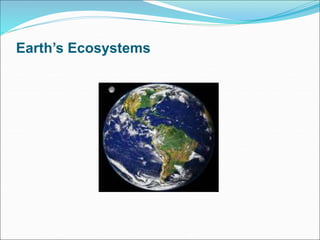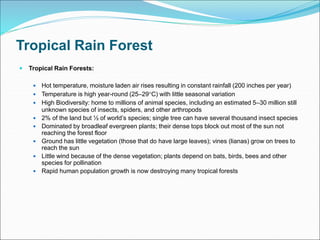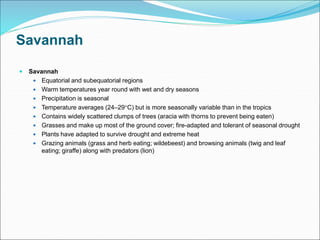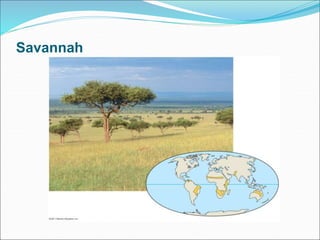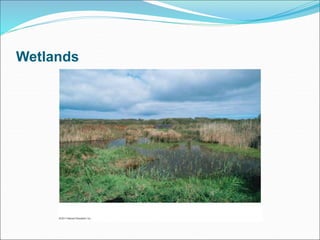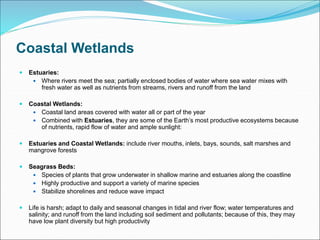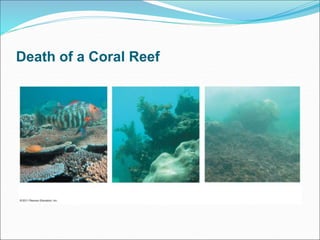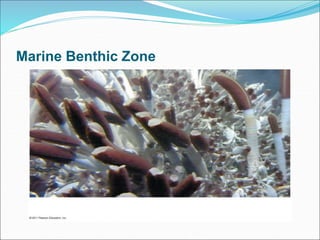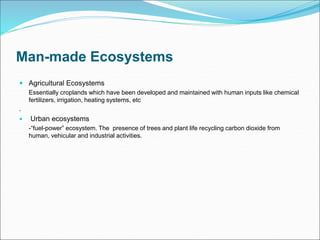This document provides an overview of Earth's ecosystems. It describes various biomes such as tropical rainforests, savannas, deserts, chaparral, temperate grasslands, temperate and northern coniferous forests, tundra, aquatic biomes like lakes and wetlands, streams and rivers, and coastal wetlands. For each biome, it discusses characteristic climate, vegetation, and animal life. The document also explains ecological concepts like weather, climate, and the rain shadow effect and how elevation influences different biomes.
